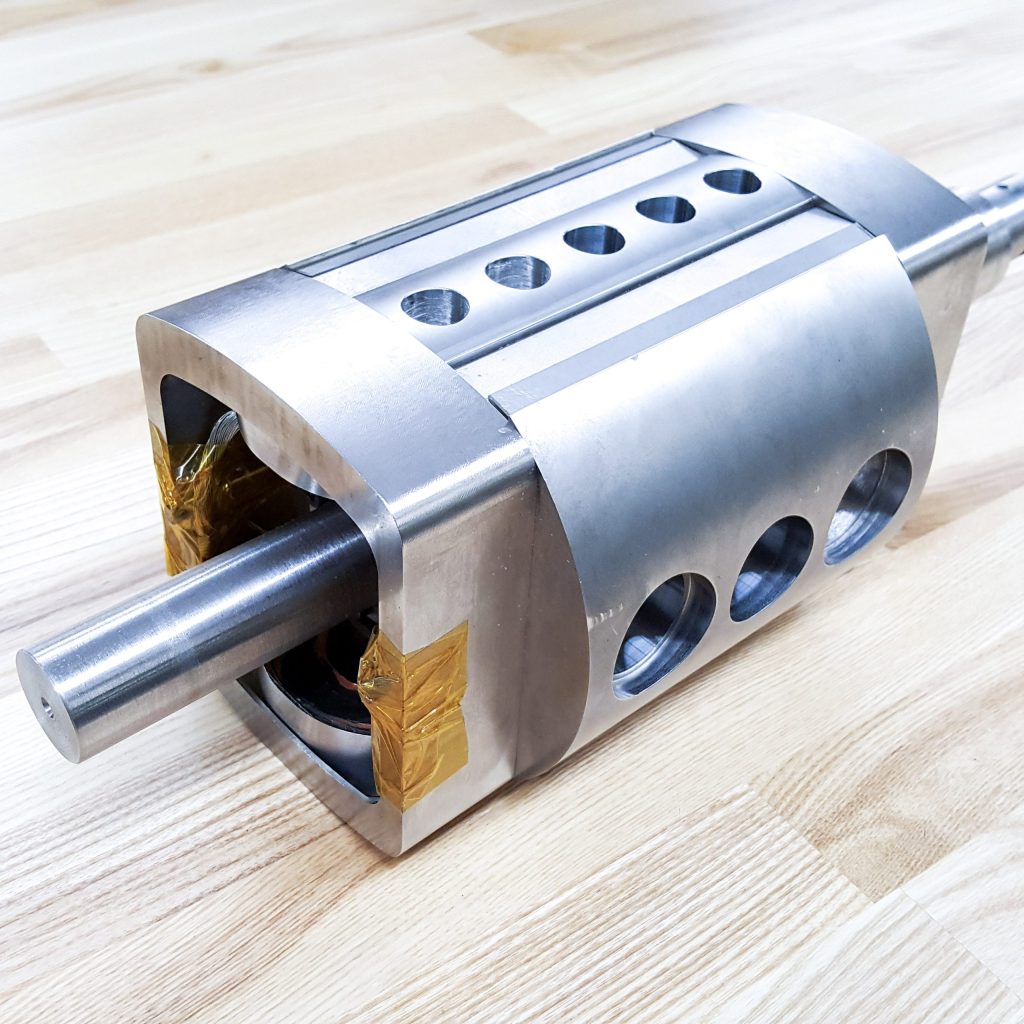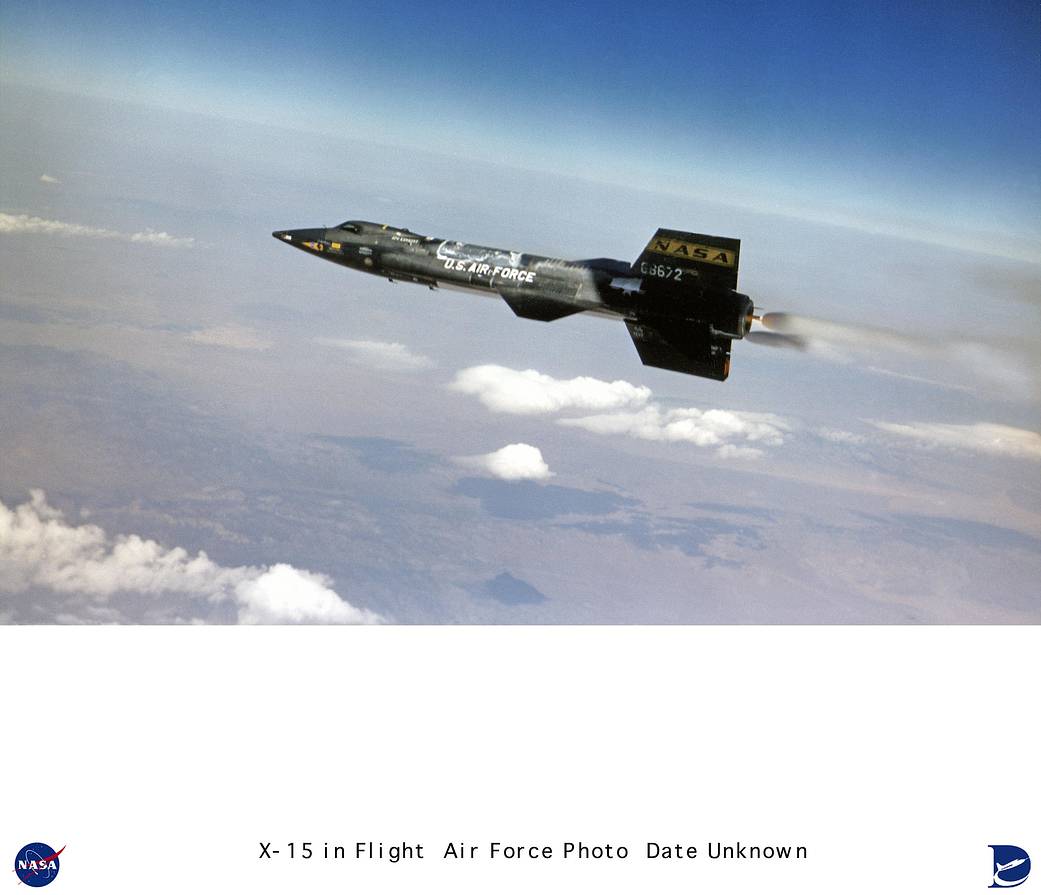E-USAF-X-15
On 15 November 1967, X-15 Ship #3 was launched over Delamar Lake, NV, with Maj. Michael J. Adams at the controls. The vehicle soon reached a speed of Mach 5.2, and a peak altitude of 266,000 feet. During the climb, an electrical disturbance degraded the aircraft’s controllability. Ship #3 began a slow drift in heading, which soon became a spin. Adams radioed that the X-15 “seems squirrelly” and then said “I’m in a spin.” Through some combination of pilot technique and basic aerodynamic stability, Adams recovered from the spin and entered an inverted Mach 4.7 dive. As the X-15 plummeted into the increasingly thicker atmosphere, the Honeywell adaptive flight control system caused the vehicle to begin oscillating. As the pitching motion increased, aerodynamic forces finally broke the aircraft into several major pieces. Adams was killed when the forward fuselage impacted the desert. This was the only fatal accident during the entire X-15 program.
The X-15 was a rocket-powered aircraft 50 ft long with a wingspan of 22 ft. It was a missile-shaped vehicle with an unusual wedge-shaped vertical tail, thin stubby wings, and unique side fairings that extended along the side of the fuselage. The X-15 weighed about 14,000 lb empty and approximately 34,000 lb at launch. The XLR-99 rocket engine, manufactured by Thiokol Chemical Corp., was pilot controlled and was capable of developing 57,000 lb of thrust. North American Aviation built three X-15 aircraft for the program.
The X-15 research aircraft was developed to provide in-flight information and data on aerodynamics, structures, flight controls, and the physiological aspects of high-speed, high-altitude flight. A follow-on program used the aircraft as a testbed to carry various scientific experiments beyond the Earth’s atmosphere on a repeated basis.
For flight in the dense air of the usable atmosphere, the X-15 used conventional aerodynamic controls such as rudder surfaces on the vertical stabilizers to control yaw and movable horizontal stabilizers to control pitch when moving in synchronization or roll when moved differentially.
For flight in the thin air outside of the appreciable Earth’s atmosphere, the X-15 used a reaction control system. Hydrogen peroxide thrust rockets located on the nose of the aircraft provided pitch and yaw control. Those on the wings provided roll control.
Because of the large fuel consumption, the X-15 was air launched from a B-52 aircraft at 45,000 ft and a speed of about 500 mph. Depending on the mission, the rocket engine provided thrust for the first 80 to 120 sec of flight. The remainder of the normal 10 to 11 min. flight was powerless and ended with a 200-mph glide landing.
Generally, one of two types of X-15 flight profiles was used; a high-altitude flight plan that called for the pilot to maintain a steep rate of climb, or a speed profile that called for the pilot to push over and maintain a level altitude.
The X-15 was flown over a period of nearly 10 years – June 1959 to Oct. 1968 – and set the world’s unofficial speed and altitude records of 4,520 mph or Mach 6.7 (set by Ship #2) and 354,200 ft (set by Ship #3) in a program to investigate all aspects of manned hypersonic flight. Information gained from the highly successful X-15 program contributed to the development of the Mercury, Gemini, and Apollo manned spaceflight programs, and also the Space Shuttle program.
The X-15s made a total of 199 flights, and were manufactured by North American Aviation.
X-15-1, serial number 56-6670, is now located at the National Air and Space museum, Washington DC.
North American X-15A #2, serial number 56-6671, is at the United States Air Force Museum, Wright-Patterson AFB, OH. Parts of the crashed X-15 #3, serial number 56-6672, recovered in 1992 by Peter Merlin and Tony Moore (The X-Hunters) are on display at the Air Force Flight Test Center Museum at Edwards. The canopy from Ship #3, recovered during the original search in 1967, is displayed at the San Diego Aerospace Museum, San Diego, CA.1960sNASA Photo / › X-15 Project Description
4 min read






























